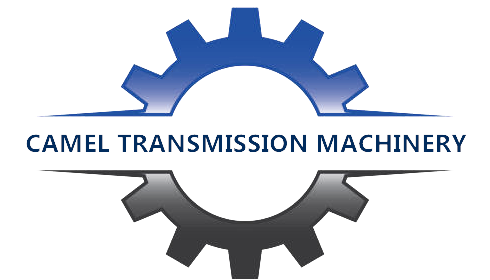Servo motors are divided into two categories: AC servo and DC servo.

1. AC Servo Motor Classification
The basic structure of an AC servo motor is similar to that of an AC induction motor (asynchronous motor). There are two excitation windings and control windings with a phase space displacement of 90° electrical angle on the stator, connected to a constant AC voltage, and using the AC voltage or phase change applied to Wc to achieve the purpose of controlling the operation of the motor. AC servo motors have the characteristics of stable operation, good controllability, fast response, high sensitivity, and strict non-linearity indexes of mechanical characteristics and adjustment characteristics (requirements less than 10% to 15% and less than 15% to 25%, respectively).
(1) Asynchronous AC servo motor
Asynchronous AC servo motors refer to AC induction motors. It is divided into three-phase and single-phase, as well as squirrel-cage type and wire-wound type. Squirrel-cage three-phase induction motors are usually used. Its structure is simple, compared with a DC motor of the same capacity, the weight is 1/2 lighter, and the price is only 1/3 of the DC motor. The disadvantage is that a wide range of smooth speed regulation cannot be realized economically, and the lagging excitation current must be absorbed from the grid. As a result, the power factor of the power grid deteriorates.
(2) Synchronous AC servo motor
Although synchronous AC servo motors are more complex than induction motors, they are simpler than DC motors. Its stator is the same as an induction motor, with symmetrical three-phase windings on the stator. The rotor is different. According to different rotor structures, it is divided into electromagnetic and non-electromagnetic. Non-electromagnetic type is divided into hysteresis type, permanent magnet type and reaction type. Among them, hysteresis and reactive synchronous motors have disadvantages such as low efficiency, poor power factor, and small manufacturing capacity. Permanent magnet synchronous motors are often used in CNC machine tools. Compared with the electromagnetic type, the permanent magnet type has the advantages of simple structure, reliable operation, and higher efficiency; the disadvantage is that it is large in size and poor in starting characteristics. However, the permanent magnet synchronous motor adopts high remanence induction and high coercivity rare earth magnets, which can be about 1/2 smaller than the DC motor, 60% less in mass, and 1/5 of the rotor inertia of the DC motor. Compared with asynchronous motors, it has high efficiency due to the use of permanent magnet excitation, which eliminates excitation loss and related stray losses. Because there are no slip rings and brushes required by electromagnetic synchronous motors, its mechanical reliability is the same as that of induction (asynchronous) motors, but its power factor is much higher than that of asynchronous motors, so that the volume of permanent magnet synchronous motors is larger than that of asynchronous motors. The electric motor is smaller. This is because at low speed, the induction (asynchronous) motor has a low power factor and outputs the same active power, but its apparent power is much larger, and the main size of the motor is determined by the apparent power.
2. DC Servo Motor Classification
The basic structure of a DC servo motor is similar to that of a general DC motor. Motor speed n=E/K1j=(Ua-IaRa)/K1j, where E is armature back electromotive force, K is constant, j is magnetic flux per pole, Ua, Ia are armature voltage and armature current, Ra is Armature resistance, changing Ua or changing φ, can control the speed of the DC servo motor, but generally the method of controlling the armature voltage is adopted. In the permanent magnet DC servo motor, the field winding is replaced by a permanent magnet, and the magnetic flux φ is constant. . The DC servo motor has good linear regulation characteristics and fast time response. DC servo motors are divided into brush and brushless motors.
(1) Brushed DC servo motor
The motor has low cost, simple structure, large starting torque, wide speed range, easy control, and needs maintenance, but it is easy to maintain (changing carbon brushes), it will produce electromagnetic interference, and there are requirements for the environment. Therefore, it can be used in common industrial and civil occasions that are sensitive to cost.
(2) Brushless DC servo motor
The motor is small in size, light in weight, large in output, fast in response, high in speed, small inertia, smooth in rotation, and stable in torque. It is easy to realize intelligence, and its electronic commutation method is flexible, which can be square wave commutation or sine wave commutation. The motor is maintenance-free and there is no carbon brush loss. It has high efficiency, low operating temperature, low noise, low electromagnetic radiation, long life, and can be used in various environments.
Advantages and disadvantages of AC servo motors
Advantages: good speed control characteristics, smooth control in the entire speed zone, almost no oscillation, high efficiency of more than 90%, low heat generation, high-speed control, high-precision position control (depending on the encoder accuracy), rated operating area Inside, it can achieve constant torque, low inertia, low noise, no brush wear, and maintenance-free (suitable for dust-free and explosive environments).
Disadvantages: The control is more complicated, the driver parameters need to be adjusted on-site to determine the PID parameters, and more connections are required.
Advantages and disadvantages of DC servo motors
Advantages: precise speed control, hard torque and speed characteristics, simple control principle, convenient use and low price.
Disadvantages: brush commutation, speed limit, additional resistance, and wear particles (not suitable for dust-free and explosive environments).
